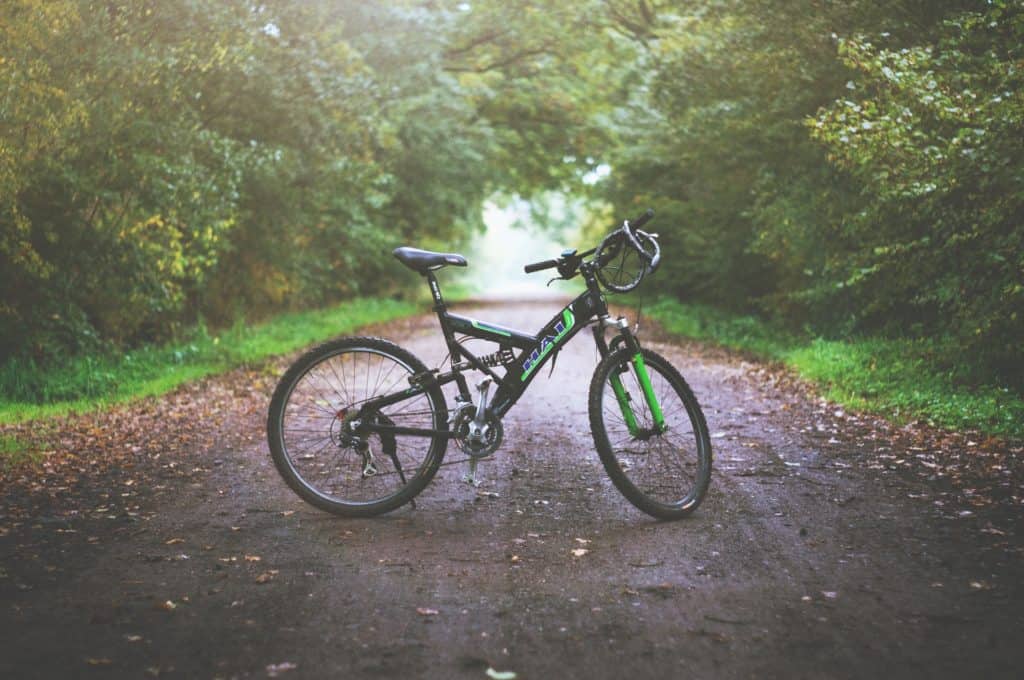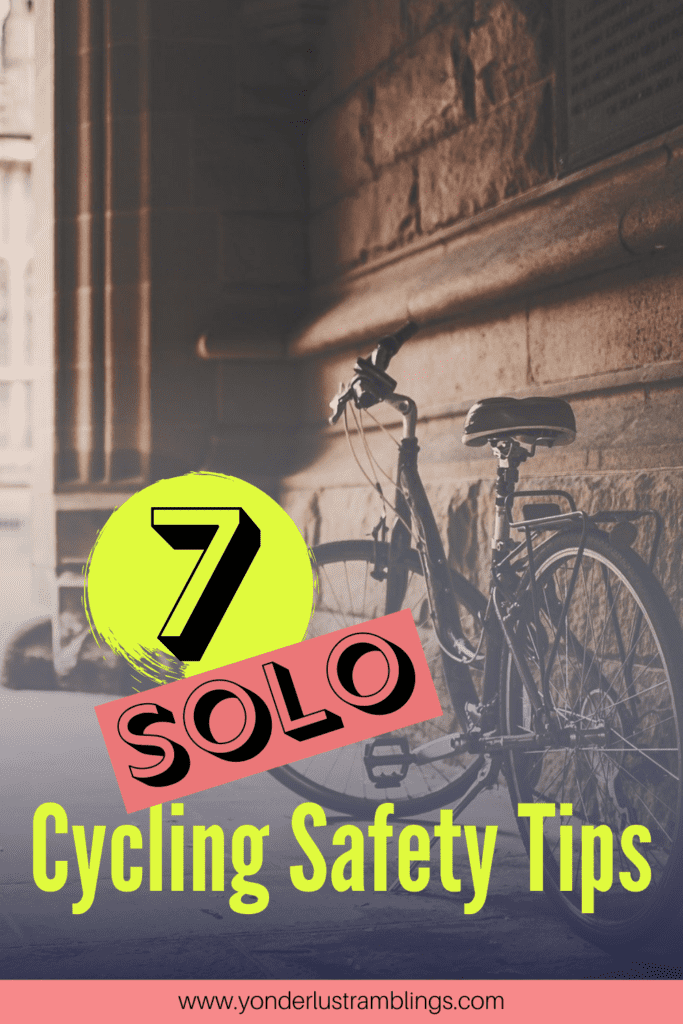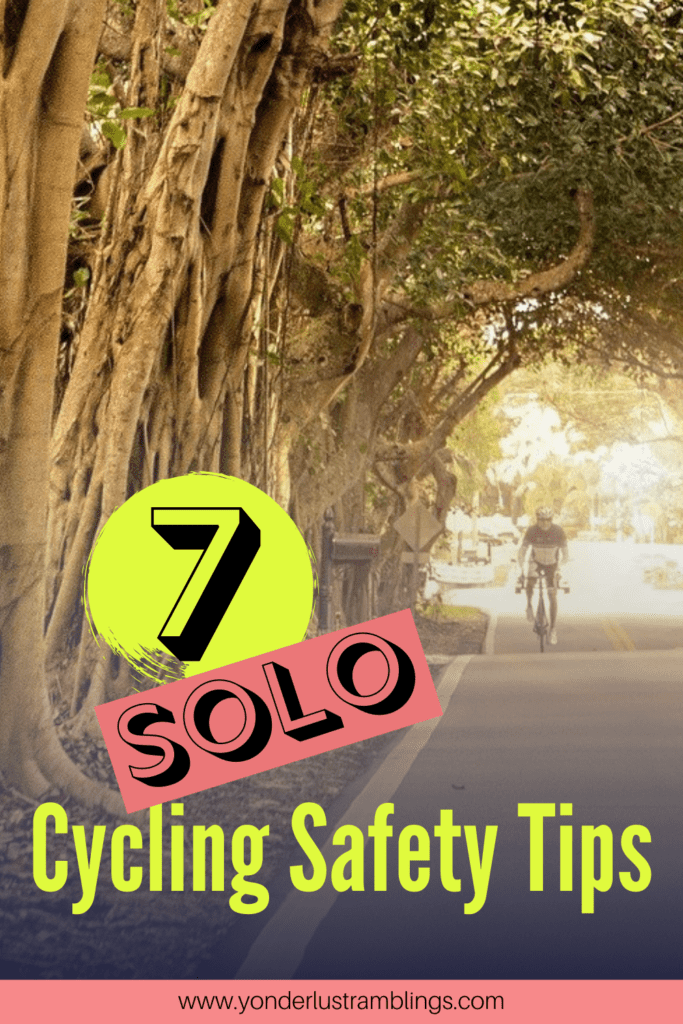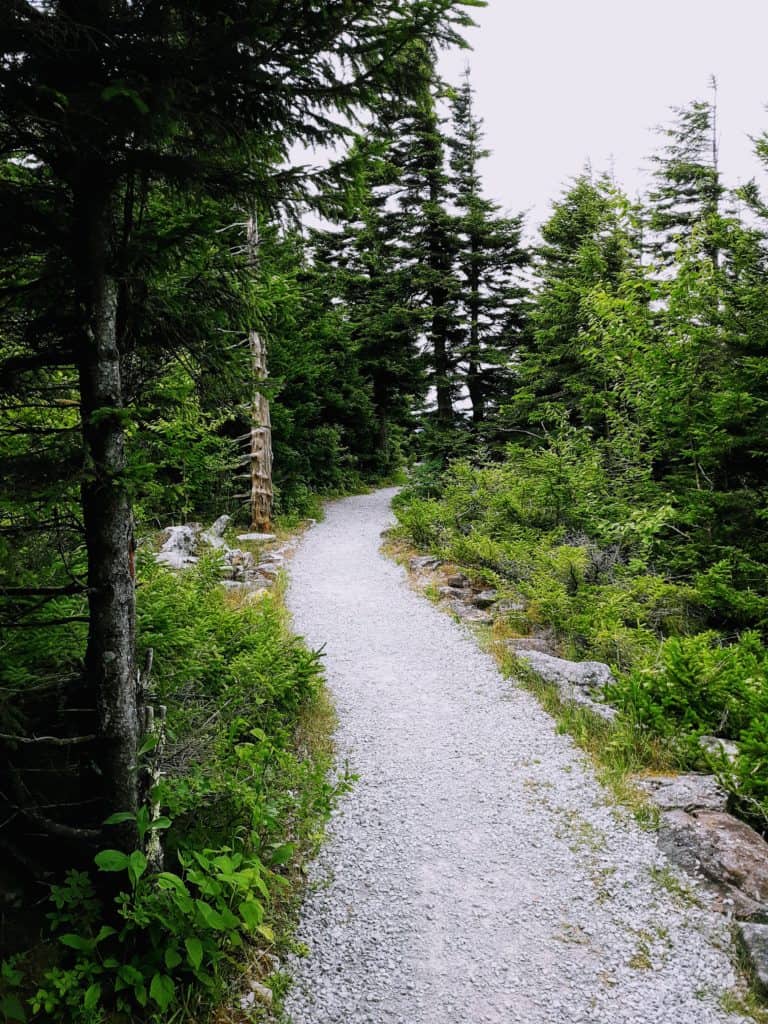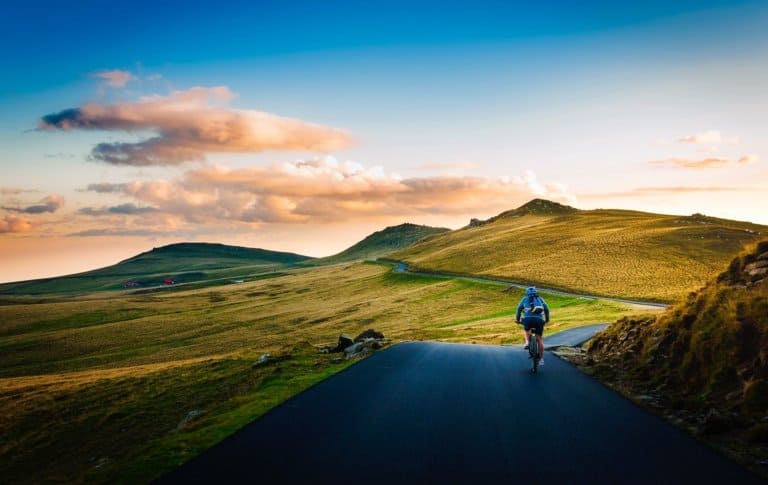7 Solo Cycling Safety Tips To Put Into Practice Now
There are two main types of cyclists out there – those that get a rush out of the shared camaraderie and accountability of a social group ride, and those that look forward to the solitary experience of solo cycling, with its ability to relieve the stresses of the day and provide time to decompress. I myself tend to fall into the latter category of biking solo. Biking alone is an escape, a break from the chaos of the regular routine, and a much appreciated time alone with my thoughts. In fact, I feel I do some of my most introspective and best thinking when I’m cycling alone. Solo cycling isn’t for everyone, but for many, it might be the only opportunity at cycling. Not everyone has a like minded cycling friend to join them on rides, or a local group to be a part of. And whether it is by choice or necessity, biking alone can obviously be intimidating for many reasons. Just as with other active travel and active lifestyle routines, such as hiking solo or running solo, it is important to have a framework and a plan for how to safely cycle solo. These 7 solo cycling rules will walk you through how to mentally and physically create a responsible plan and safe habits for cycling alone. If you make these a regular part of your cycling routine, then cycling solo does not have to be nearly as intimidating!
RELATED: Solo Running Safety Tips
Disclosure: Below are some affiliate links-these are all products I highly recommend. I won’t make any recommendations on this page that I haven’t tested or personally used!
Table of Contents
7 Solo Cycling Safety Tips
These 7 solo cycling safety tips provide the basic framework for which all aspects of cycling safety fall under.

#1: Plan Ahead When Cycling Alone
The first priority and arguably most important solo cycling rule is making sure to plan ahead, in all aspects of your ride! In the hiking world, many hikers tend to get lost when they failed to plan ahead, failed to look at the weather forecast, failed to get the necessary gear, etc. In the running world, many runners can find themselves in a bind when running solo if they failed to plan out their route, failed to account for their surroundings, etc. And it is the same for biking solo. Plan ahead with your gear, plan ahead for your route, plan ahead for your breaks, plan ahead for the weather, and plan ahead for emergencies.
Cycling isn’t the cheapest hobby, but if you invest in the right gear right off the bat, your experience will be better, and you just might offset even costlier medical bills! Plus, you’ll have a head start on planning ahead! I’ll get into more gear recommendations later, but make sure that you have a trusted, reliable inventory of the basic necessities: a helmet, reflective gear/lights, clothing/accessories, hydration systems, and a repair kit! Don’t skimp on these items. They can save your neck in a bind, and even more so if you are cycling alone without someone else to rely on, possibly miles from home!
Planning my riding route ahead of time is huge for me! I am also an avid runner and hiker, and I have found that with biking solo, there’s a lot less flexibility in being able to make last second changes to a route. When I’m running or hiking, I can hit the “brakes” much easier than needing to stop unexpectedly on a bike, for example. I can avoid obstacles, or come to a stop much easier than on a bike, especially one I am clipped into.
For reasons like these, I like to know every inch of my route as much as possible before hand. I want to know when and if I may need to make more challenging left hand turns, or cross multiple lanes of traffic, etc. I usually check Google Maps, and if possible, do a quick drive by of my route from a car before biking it solo. I know exactly where I plan to stop for rest breaks, water breaks, etc. I know the areas of higher traffic and lower traffic, multiple lanes and single lanes, etc. before hand. I scan the roads for existing potholes, obstacles, etc. whenever I can prior to solo cycling. Know your route as much as possible before hand as part of planning ahead.
The weather is another big factor in planning ahead. Check the weather before your ride. Bring a backup plan if there is a chance of showers. As a general rule, I do not recommend cycling alone or in a group in serious inclement weather, but sometimes a little weather can sneak up on you, especially on longer solo rides. Have a plan for that ahead of time. This also ties in with getting the right gear!
Emergencies happen. Falls definitely happen, unfortunately (by the way, here’s how to handle falling off your bike when it does happen). We always hope they don’t, but have a plan for emergencies. Each time I have had the unlucky experience of falling off my bike, I was biking solo. I didn’t have to panic though, because I had anticipated it might happen, and I had a plan. Know how you will allow yourself to be identifiable, and how you plan for someone to know your whereabouts. Think through scenarios and know how you would react ahead of time, in an effort to remain calm. Know how you would treat yourself in an emergency, and, be prepared for repairs. Know how to perform minor repair and quick fixes on your bike. Again, this goes back partly to getting the right gear!
RELATED: Solo Hiking Safety Tips
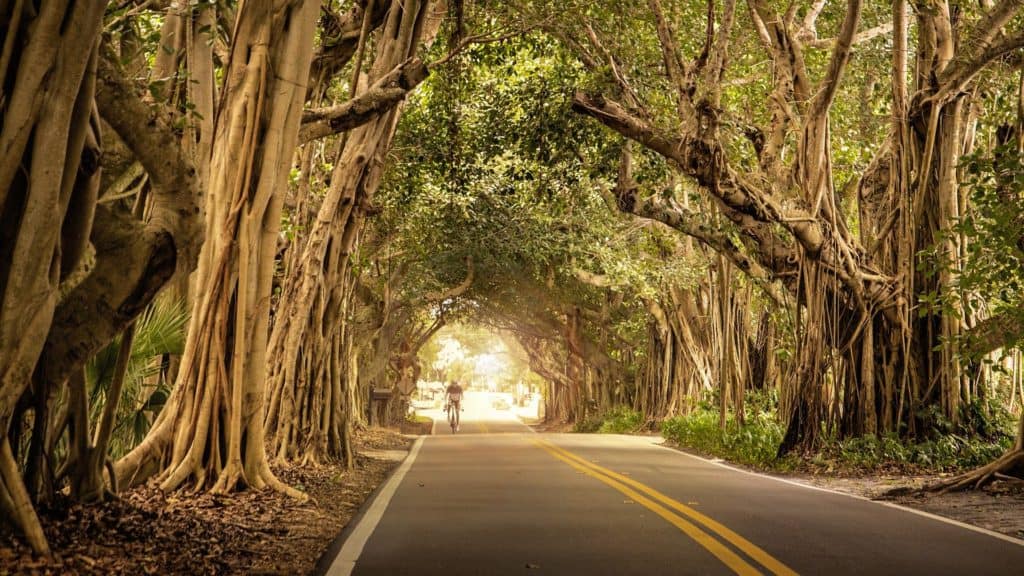
#2: Invest in the Best (Gear)
As mentioned before, getting the right gear, all the basic necessities, and not skimping on those is crucial. You can mix and match and customize and skimp on other non essential items like clothing, tech, or accessories, but not on your helmet, repair kit, reflective/ safety/lighting gear, necessary clothing, and water transportation. Here’s the no fail, trusted gear you need to have for solo cycling.
- Helmet! Do not skimp on this one. Get a highly rated cycling helmet like this one available on Amazon.
- Lighting and Safety Gear! You should have lights on the front and rear of your bike. Lights that blink, are waterproof, and lights that are easily rechargeable are bonus. This pair of simple front and back lights are inexpensive, easy to install, easy to recharge, easy to adjust, waterproof, and provide different modes of flashing. Some type of reflection gear is great like this item, especially for early morning or evening rides. A simple side mirror can help you see traffic coming up behind you. This side mirror set is extremely inexpensive, super easy to install, adjust, clean, move, and comes with extra parts. These are three items that are simple, cheap, and great proactive ways to go cycling alone with a better conscience!
- Repair kit! You need to know how to self repair minor (or even better major) repairs and quick fixes. Of course, one of the more common issues that can set you back when cycling alone involves anything tire related. A simple transportable repair kit like this one should be a part of every solo ride. It comes with a mini air pump, tire patches, and multi-tool.
- Clothing/Accessories! These items are more customizable and up to personal preference, but they will go a long way in ensuring a successful solo ride. Padded shorts like these will very likely keep you comfortable in the saddle longer. A cycling jersey specifically designed for bikers can give you a little more aerodynamics, as well as built in storage for personal items like your phone, car keys, Chapstick, etc. And determining your cycling shoe is also very important, but more importantly so if you happen to ride clipped in. If you ride with clip in pedals, you will need to get a corresponding cleated shoe that clips in to such pedals. Your solo ride will be very short without both.
- Hydration! You need to have a plan for hydration. Even if you are on a route that is supported with water, or on a path that has public water in place, it is still a good idea to have water on your own person. If you anticipate longer stretches of biking, a hydration vest with water bladder might be preferable, for quick, uninterrupted, and sustained hydration. Basic water bottle cages are cheap and simple to install, and make sure to pair this with your preferred method of water transportation. I personally find that my favorite is a super well insulated Hydroflask!
#3 :Ensure Proper Bike Maintenance
Gear comes into play more when biking alone, than it does in other outdoor activities like running or hiking. That is because literally so much is “riding” on the integrity of your gear. You can literally be stranded without properly functioning and maintained bike gear. Your bike literally holds your life in its hands at times, even more so when biking alone. So treat it as such. Take care of it like your life depended on it!
Check over your bike’s vitals before every ride. Check the tires, check the pressure, check the mechanics, check your lights, check your gears, etc. Know and ensure the proper tire pressure for your tires before every ride. Perform or take your bike in for regular “tune ups” and cleanings. And again, know how to perform repairs and quick fixes if and when necessary.
There are many experienced bikers out there who can perform maintenance on their own bikes, but as a newbie, make sure to get regular scheduled tune ups from a bike shop in addition to your regular pre-ride checks!
#4: Notify Someone of Your Plans When Biking Alone
This should be a rule whenever you do anything solo, not just solo cycling. Let someone know when and where you are planning to go solo cycling. Whether it is a family or friend, make sure that someone knows the route you intend to bike, when you are leaving, and when you plan to be finished. Know who that person will be who will check in on you if you fail to notify them of finishing your ride.
Keep in contact with this person on especially long solo rides, and be sure to let this person know when you are home safely. Carry some kind of identifying information on your person when you are biking solo, as well as some information on how to notify a good emergency contact person.
#5: Pay Attention ALWAYS When Solo Cycling
So, so important when biking solo. I cannot underestimate how much you need to pay attention to your surroundings when you are cycling, even more so when solo cycling. As mentioned before, the nature of cycling means less flexibility with surprises in the road, last second changes, or hiccups like crashes and falls. The best thing you can proactively do to offset issues is to pay attention and be super mindful of your surroundings at all times.
As a runner and hiker in addition to cyclist, I can attest to daydreaming, sight-seeing, and spacing out as I run or hike quite often. It’s a habit I try to minimize, for my safety as well as others. But I can also correct course easier, and avoid unexpected obstacles like debris in the road, or oncoming traffic, a little easier on foot then on wheels!
It’s a different story when I am biking alone. I am constantly scanning the horizon, constantly keeping track of what’s around me, constantly on the lookout for traffic and obstacles in the road like potholes, sticks, large rocks, animals, etc. There is a much shorter reaction time when biking, so it is imperative to keep your eyes on your surroundings, and never take your eyes off of them for a second when solo cycling. Proactiveness can do a lot to offset potential pitfalls to your solo cycling experience.
#6: Lean on Others
You may not encounter many others on your bike rides, but if you do, and if you have the chance, it is not a terrible idea to lean on the knowledge of others. For example, at one of my designated “break spots” on one of my routes, I’ll occasionally chat up the local fisherman about the weather. Or sometimes, a fellow walker sharing the road will warn me of a downed branch in the road up ahead, or construction causing road closures. It does not hurt to lean on others to help you have a safer and successful solo cycle, if the opportunity presents itself.
RELATED: Cycling Training Plans for Long Distances Races
#7: Be Overly Prepared for Solo Cycling
Being overly prepared for solo cycling just means that you are doing all of the above, and then doing more where you can! Go above and beyond in preparing for biking solo. Make it a part of your regular mentality and habits, and you’ll be well equipped for cycling alone!
RELATED: Cycling Rules of the Road to Know and Follow (especially when biking alone!)

PIN for LATER!



